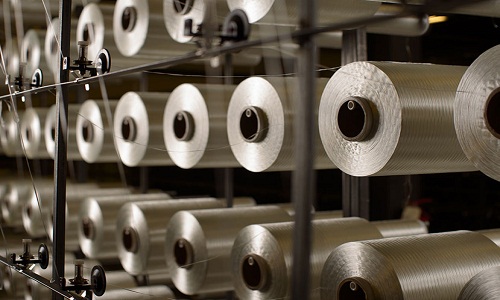"Raw material prices for Polyester and nylon rose in many nations, including China, due to the recent OPEC deal and short-term demand for fibers, says a new report from PCI. This mechanism will continue until producers realise there is insufficient forward demand; probably as a slowdown hits heading coming into the Lunar New Year (LNY), and if not then a few weeks after LNY. In addition to expected oil price discipline, there has been excitement at the upcoming start of an MEG futures market in China which is stoking speculative pricing."

Raw material prices for Polyester and nylon rose in many nations, including China, due to the recent OPEC deal and short-term demand for fibers, says a new report from PCI. This mechanism will continue until producers realise there is insufficient forward demand; probably as a slowdown hits heading coming into the Lunar New Year (LNY), and if not then a few weeks after LNY. In addition to expected oil price discipline, there has been excitement at the upcoming start of an MEG futures market in China which is stoking speculative pricing. Other markets, including viscose and spandex raw materials, also experienced price increases in December and Chinese exports are projected to achieve a year-end record at the end of the month.
Rising raw material prices

Polyester raw material prices, particularly those of paraxylene (PX) jumped in December, due to rising oil prices and PX capacity expectations. In Asia, PX experienced a quick rollover at $795 for the month, followed by prices that surpassed the $850/metric ton barrier. North American PX prices settled at 42.00 c/lb, which was up 1.0c/lb following the production cutback agreement implemented by OPEC and non-OPEC nations. The European PX settlement was $795/ton for December. As per the report, there are no suggestions of either PX or PTA supply issues currently in the short month of December. The expectation is of higher prices going forward but no supply issues for PX.
While Asia remains a catalyst for global benzene market, nylon raw material prices rose in December. China’s strong demand for benzene and higher crude oil prices were responsible for this price surge. PCI said current spot prices are expected to reach up to $100/ton in January. Asia’s benzene prices surpassed $115/ton, due to strong styrene demand and inventory rebuilding before the Chinese new year.
American benzene contract price negotiations ended in December with a split settlement of $700 to $703/ton, which was an increase of $33 to $45/ton over November’s split settlement. December spot negotiations also are $658/ton to $667/ton and rose approximately $100/ton over November levels. European benzene contract prices settled at $667/tonne, up from $659/tonne in November. A weaker exchange rate between the Euro and American Dollar contributed to this price jump in European nylon raw material prices.
Viscose fiber prices inched upward in December as viscose staple fiber (VSF) prices recovered. Medium quality VSF prices stabilized at $1.89 to 1.91/kg excluding VAT in November until mid-December, when medium quality VSF prices increased to $2,187-2215/tonne. VSF demand globally remains high and processors have minimized inventories to avoid harsh price changes. Many major VSF companies, including Lenzing, are also taking advantage of higher VSF demands by boosting their production capabilities. Lenzing will construct a new 90 kilotons per annum (kpta) lyocell plant in the US, which will boost the company’s VSF production to 333 kpta by 2020.
Spandex prices went up in December as Chinese exports remain robust at the end of the year. Higher spandex prices in Asia, particularly those in China, were attributed to firmer feedstock prices. China’s MDI price rose from $2.85/mt to $2.99/mt, meanwhile China’s PTMEG prices also rose from $1.94/mt to $2.09/mt. Furthermore, Chinese spandex imports have reached 60 kt, which was up nine per cent from 2015, as the nation prepares to expand its spandex sector. North America’s spandex prices remained relatively quiet, but PCI said there is optimism for next year’s market. The region’s spandex industry may benefit from the likely cancelation of TPP and international performance fabric manufacturing investments.
In Europe, spandex prices remained unchanged for December despite higher hosiery sales. “Although Chinese spandex price offers are beginning to move upwards, there appears to be insufficient strength in the wider European spandex markets to support any price drive into Q1 2017,” the report noted. “Our expectations are therefore for a rollover in mainstream pricing for Q1 2017 but some of the cheapest import offers may disappear from the market, giving a tighter price spread.”












